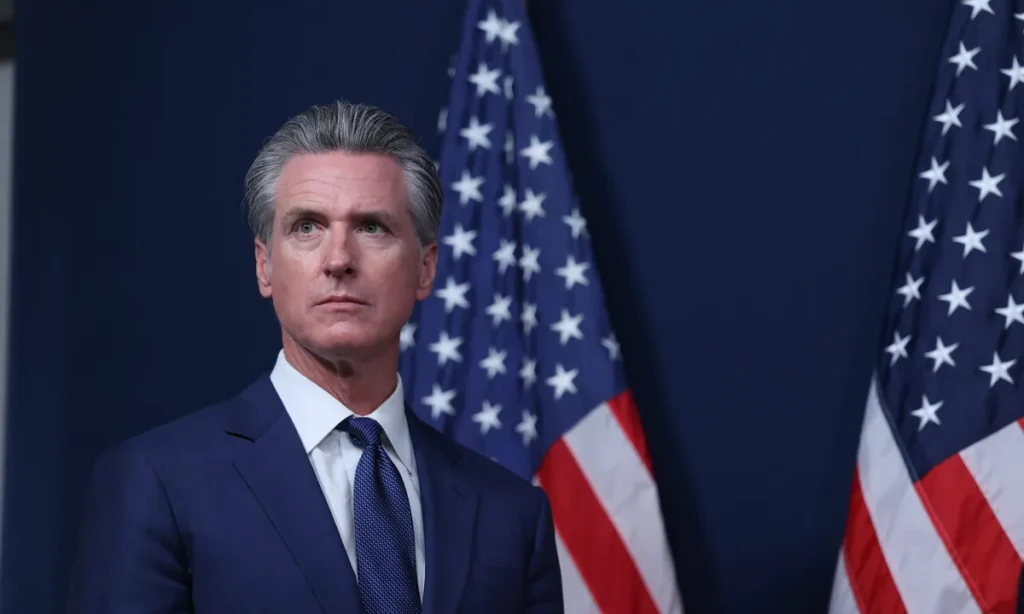Jensen Huang, president and chief executive of Nvidia, delivers a keynote address during the Nvidia GTC conference in Washington, Oct. 28, 2025. As Huang traveled to Asia to meet with President Donald Trump on Wednesday, his company’s value topped $5 trillion. (Eric Lee/The New York Times)
Share
|
Getting your Trinity Audio player ready...
|
Just three weeks ago, Nvidia became the first publicly traded company to be worth more than $5 trillion thanks to the cutting-edge computer chips it makes for artificial intelligence.
On Wednesday, Nvidia provided a reminder of just how much the world craves those chips. The company said that in its most recent quarter, its profit was $31.9 billion, up 65% from a year ago and 245% from the year before that. Among the tech industry’s giants, only Google’s parent company, Alphabet, made more money in the same quarter.
Nvidia controls about 90% of the market for the chips used in AI projects, and its financial performance has become a bellwether for what can be expected of the rest of the tech industry, which is investing trillions of dollars in big data centers all over the world.
Nvidia’s eye-popping profits could be enough to calm nerves on Wall Street, where there are increasing concerns that lavish spending is getting way ahead of demand for the products and services Silicon Valley’s engineers are building.
The S&P 500 is down 3.6% since Nvidia, the most valuable publicly traded company in the world, hit its $5 trillion milestone. Shares of Nvidia have fallen 10% during that time, though they are still up 34% this year.
Nvidia has experienced heady growth since the AI boom started three years ago, and the most recent quarter was no different. In the three months that ended in October, the company said sales of its chips for AI data centers rose 44% to $51 billion. The business helped lift the company’s total revenue to $57 billion, eclipsing Wall Street’s expectations for sales of $55.2 billion.
Importantly, Nvidia also provided hints that a company with a stranglehold on an essential product can continue growing fast, even as total sales mushroom. Nvidia’s revenue in the current quarter is projected to rise 65% from a year ago to $65 billion, in line with recent quarters. The forecast blew past Wall Street’s forecast for sales of $57 billion.
“Blackwell sales are off the charts, and cloud GPUs are sold out,” Jensen Huang, the company’s CEO and co-founder, said in a news release. “Compute demand keeps accelerating.”
Shares of the company rose more than 3% in after-hours trading.
Deals Raise Questions
In recent months, Nvidia has worried investors because it is making investments in some of the customers that buy its chips. The deals have raised questions about whether Nvidia is paying itself. For example, it announced it would invest $100 billion in OpenAI, which makes ChatGPT. The startup receives that money as it buys or leases Nvidia’s chips.
On Tuesday, it announced a similar deal with another AI company: Nvidia will invest $10 billion in Anthropic, which will purchase $30 billion in AI computing backed by Nvidia chips. Goldman Sachs has estimated that Nvidia will make about 15% of its sales next year from what critics call circular deals.
“The fundamentals for the company are still intact, but you have these clouds that keep popping up,” said Daniel Morgan, a senior portfolio manager at Synovus, a bank.
Huang has defended Nvidia’s investments. Speaking at a news briefing in Washington last month, he said that Nvidia hadn’t invested any of the $100 billion yet and that the deal was really an invitation to invest “along the way” as OpenAI builds toward an eventual public listing.
Nvidia is also facing questions about increased competition. AMD, which also makes high-quality AI chips, recently struck its own deal with OpenAI; and Qualcomm, another chipmaker, struck a deal to sell its AI products to Saudi Arabia.
Huang has remained optimistic about Nvidia’s prospects. Last month, he revealed that the company was expecting $500 billion in sales through the end of next year, which would more than double what it made over the previous two years.
The company’s sales are growing, even as it remains blocked from selling to China. Beijing has discouraged Chinese companies from buying Nvidia’s chips, hindering its access to the world’s largest semiconductor market. Huang had been campaigning President Donald Trump to approve the sale of Nvidia’s latest line of chips to China and encouraging Beijing to allow companies to buy them.
But Trump’s advisers discouraged him from weighing in on the issue for national security reasons when he recently met with China’s leader, Xi Jinping. Trump instead said that Huang would have to negotiate directly with the Chinese.
—
This article originally appeared in The New York Times.
By Tripp Mickle/Eric Lee
c. 2025 The New York Times Company



















